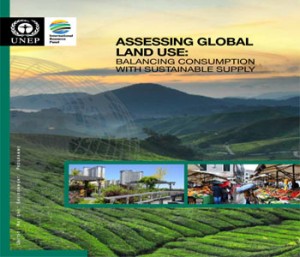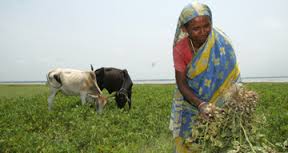Warning Issued on Food and Land Pressures in a Growing World
Jan 26th, 2014 | By admin | Category: Food and Hunger/AgricultureBy Suzanne York, www.howmany.org
A United Nations report titled Assessing Global Land Use: Balancing Consumption with Sustainable Supply highlights the pressing need to cope with changes in a growing and consuming world that is shifting quickly from the one we’ve known for decades.
According to the UN Environment Programme (UNEP), the need to feed a growing number of people across the world has led to more land being converted to cropland at the expense of the planet’s savannah, grassland and forests. This has resulted in widespread environmental degradation and loss of biodiversity, affecting an estimated 23 percent of global soil.
7 Billion and Growing
In particular, the UNEP report considers the impacts of global trends—population growth, urbanization, and changes in diets and consumption behaviors— on global land use dynamics, considering the consequences for biodiversity, the supply of food, fibers and fuel, and the long-lasting implications for resource security.
World population continues to grow, and with 9.6 billion people predicted to live on this planet by 2050, food will become more and more of an issue for everyone.
A consortium of 27 internationally renowned resource scientists, 33 national governments and other groups produced the report, and the panel underscored that “The demand for food will continue to increase towards 2050 as a result of population growth and new demands (bioenergy, biomaterials), increased incomes and growing consumption of meat and dairy products.”
Land and Agriculture Concerns
Another concern of note is that agriculture is losing fertile soil to an increasingly urbanized world. “An expanding global population and a worldwide trend towards urbanization, up to 5 per cent of the global land (around 15 billion hectares) is expected to be covered by built-up areas by 2050.”
Per UNEP, “Under business as usual conditions, the growing demand for food and non-food biomass could lead to a gross expansion of cropland in the range of 320 to 850 million hectares by 2050. Expansion of such magnitude is simply not compatible with the imperative of sustaining the basic life-supporting services that ecosystems provide such as maintaining soil productivity, regulating water resources, sustaining forest cover or conserving biodiversity.”
Perhaps one of the most important parts of the report is the acknowledgement by UN Under-Secretary General and UNEP Executive Director Achim Steiner that “There is no way such an amount can be compensated by increasing yields alone.”
The Green Revolution and genetically-engineered foods are not the solution here. Rather, slowing population growth, empowering rural and small-scale farmers (and women), curbing overconsumption, and refiguring the global trade system (especially free trade agreements and land grabs that perpetuate inequity) are some solutions we can enact today.
Integrated SolutionsEncouragingly, UNEP notes that it is necessary to have “family planning programmes to slow down population growth.” The authors go on to state that “An effective policy to control human fertility and thus growth of the world population may have a more pronounced impact on future food security than efforts to enhance crop yields. Mitigation of birth rates requires improved education, in particular of women.”
Our best chance of reaching a healthy and balanced world is with a holistic, integrated approach to solving global problems. It is encouraging that UNEP included family planning as part of the solution to addressing food, agriculture and land issues, as well as consumption, biodiversity loss, and environmental degradation. There isn’t one silver bullet, but many, and fortunately awareness of this is rising, hopefully just in time.
Suzanne York is a senior writer with the Institute for Population Studies.


